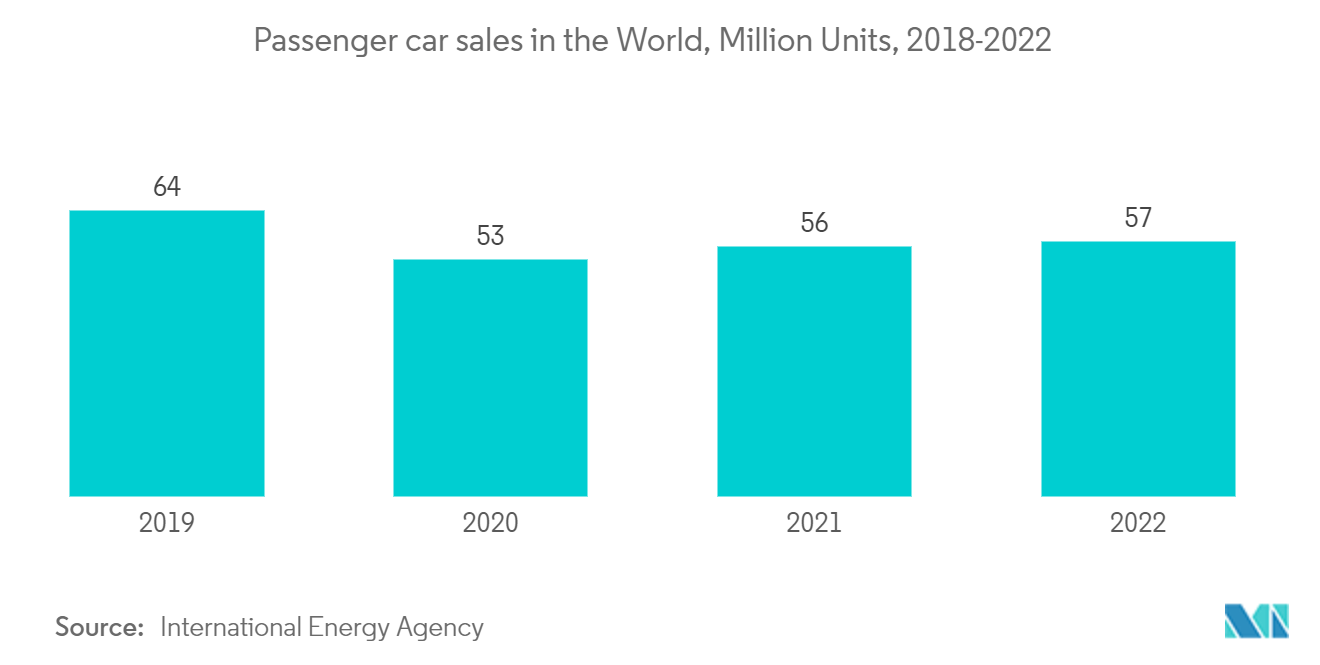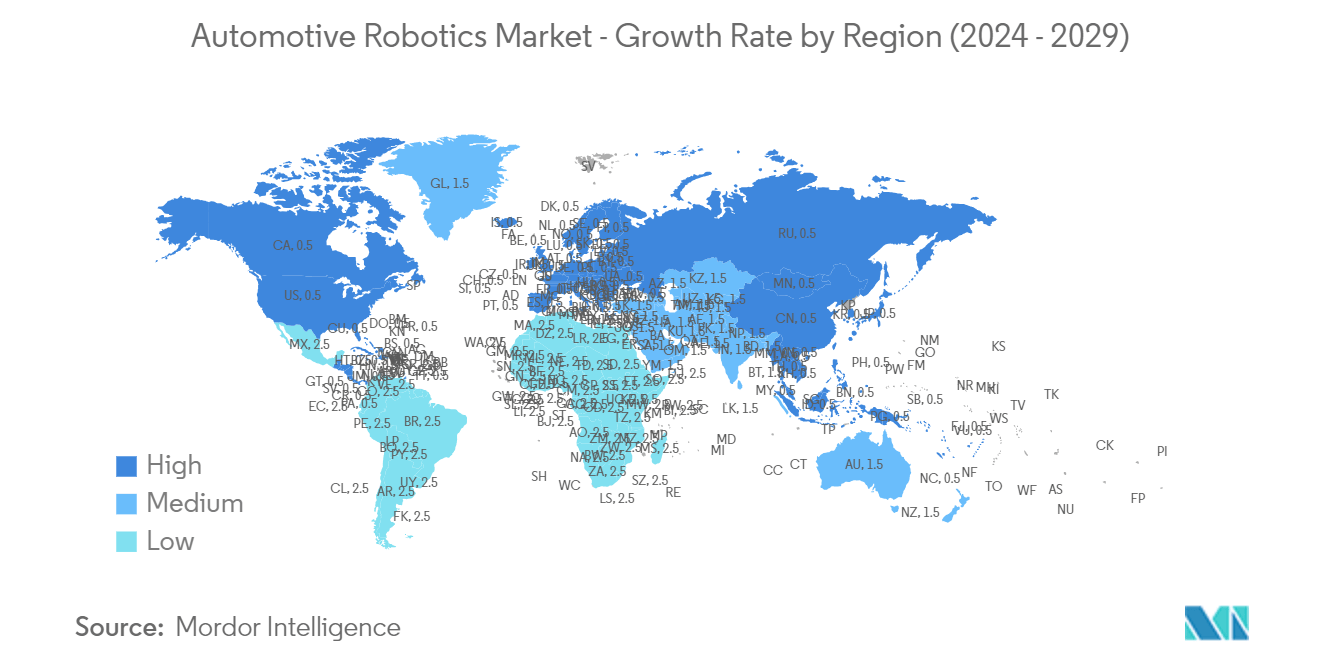Market Trends of Automotive Robotics Industry
Welding Robots Hold the Highest Share
The automotive industry has adopted automotive robotics widely, with welding being one of the most prominent applications. Within the manufacturing environment, two types of welding robots are generally used, i.e., semiautomatic and automatic welding robot systems, for most welding operations in automotive manufacturing, which offer precision, efficiency, and speed.
These robots have increased factory safety and have helped save millions of dollars as they have the potential to double, or even triple, production time by cutting labor costs.
Considering the industry demands for lighter vehicles, robotic welders play an important role in producing advanced, top-tier vehicles. With strict industry standards, robots consistently prove their ability.
More companies are relying on robotic welding systems with technological advances for high-tech applications such as EV vehicles and self-driving cars, which require even more precise assembly.
For instance, in July 2023, Ficep UK launched a new automatic and robotic processing solution in response to market demand for a quality welding system to help address skilled labor shortages and increase productivity. In a new partnership with AGT Robotics, Ficep developed the Sabre welding robot to seamlessly tackle the most challenging and labor-intensive processes fabricators face in today’s structural steel fabrication market.
Robotics play an important part in manufacturing in many industries, with automotive being the dominating segment. Many companies expect technology to evolve with their needs.
For example, in January 2023, Oqton, a software provider of automation production solutions, and Valk Welding, a manufacturer of flexible arc welding robots, announced a new partnership. The new techniques and processes jointly developed by the companies are intended to enhance the utilization of automated robotic welding for unique or small-batch production.
The automotive industry is shifting its focus toward new technology trends, like compact robots and controllers, higher communication speed, low spatter, and high-speed welding. Thus, the welding segment is expected to hold the highest share.

Asia-Pacific is Expected to Lead the Automotive Robotics Market
Robotics technology is increasingly being adopted in Asia-Pacific due to rising demand for the automation of processes, improved efficiency and productivity, and reduced human errors. Various sectors, including automotive, healthcare, defense, and aerospace, have adopted robotics technology for process automation and efficient resource management. Industrial robots are used mainly in Asia-Pacific due to their dominance in the automotive industry and low cost of manufacturing units. The automotive robotics market is expected to witness major growth during the forecast period due to the rapid expansion of small and medium-scale industries across Asia-Pacific.
Asia-Pacific is the fastest developing region globally, with countries like India, China, Taiwan, and South Korea evolving as the leaders in this region. Leading vendors, such as ABB and KUKA, are instituting the region as their operational bases. Government regulations and funds have empowered projects to improve the infrastructure. These aspects have made the region the favored automotive manufacturing hub, thus driving the automotive robotics market.
China and India are the principal countries in Asia-Pacific in terms of development, and many industries, such as automotive, electronics, and aviation, are opening their factories in these countries, thus generating the demand for automotive robotics and making Asia-Pacific an emerging region.
Major players in the region are adopting robotics and other advanced manufacturing technologies while also making huge investments in their upcoming vehicles. For instance, in November 2023, RSP tapped into India’s USD 13 billion robotics and automation market to start a manufacturing unit in 2024. The Indian entity Scandinavian Robot Systems India Private Limited has been registered in Chennai. It will supply a range of industrial robot accessories to Indian customers of various sectors, such as automotive and electronics.
In August 2023, Chinese automaker Geely Holding Group launched a premium intelligent technology brand, JI YUE, and unveiled its first high-tech model. The JI YUE 01, the results of a tie-up with Baidu Inc. on “automotive robotics,” will be produced by Geely.
Thus, owing to such developments in the region, Asia-Pacific holds the highest share.


